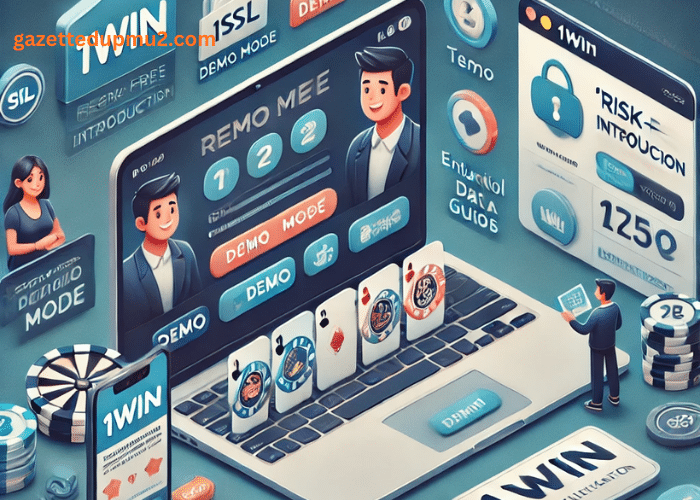Outbound advertising like cold calls, intrusive ads, and generic flyer blasts increasingly agitates modern consumers. Customer attention lies elsewhere – watching educational YouTube reviews, and researching industry query forums before deciding. This shift calls for inbound methodologies gently guiding prospects toward brands through helpful content rather than disruption.
Inbound marketing focuses on creating tailored content optimized for organic discovery by potential customers already seeking related information. Instead of abrasive sales pitches highlighting product features, inbound content offers indirect value addressing needs first. The approach establishes warmer familiarity driving considered purchases later.
The Inbound Marketing Methodology:
The inbound marketing methodology consists of four key phases:
Attract:
The first step focuses on creating magnetic content like e-books, email newsletters, and visual guides which intrigues searchers with valuable information helping them make more informed decisions related to their goals.
Engage:
After drawing potential customers seeking useful content related to service categories, interactive content like free trial sign-ups to experience tools, and live webinar explanations further involving audiences to sample offerings.
Delight:
At this stage, leads convert to using paid products/services based on positive engagements so far. The priority becomes delivering agreeable experiences through strong customer support, user community interactions, and proactive recommendations that suit their preferences.
Retain:
Post-purchase, branded content offering sustained value ensures continued usage, upsell opportunities, and loyalty becoming advocates through word-of-mouth referrals even as new leads enter earlier funnel stages.
Key Inbound Marketing Strategies
While inbound marketing focuses on relevance across strategies, execution relies on select channels:
Content Marketing:
Consistently publishing educational, entertaining blogs/videos to attract visitors from search engines and social media provides loads of opportunities for organic community building, anticipating lead needs.
Search Engine Optimization (SEO):
Optimizing website content for phrases users organically search aids discoverability. On-page tactics like meta tags, page speed, or mobile responsiveness, and offsite elements like external citations or link building improve findability and conversions.
Social Media Marketing:
Creatively packaging educational content into visually engaging formats seamlessly blends with audiences’ existing social media streams through platforms like Facebook, Instagram, and LinkedIn avoiding overt branding pitches.
Email Marketing:
Building subscriber lists through offer sign-ups allows controlled outreach on helpful resources/updates nurturing interest between purchases while tracking engagement and providing behavioral insights for segmentation.
Pay-Per-Click (PPC) Advertising:
While still an interruption, relevant text/display ads targeted judiciously based on defined buyer keywords and personalized via custom audience attributes help keep brands findable between organic rankings fluctuations.
Benefits of Inbound Marketing:
Shifting marketing investment focus towards inbound tactics offers manifold dividends:
Increased Website Traffic:
Inbound specialization through SEO, speaker content development, and social posting boosts domain authority, relevant keyword rankings, and referral traffic numbers sustainably over temporarily chasing instant banner ad clicks.
Higher Quality Leads:
Leads attracted through opt-in content subscriptions and organic searches convert better with inbound having nurtured familiarity, unlike briefly intrigued clicks from outbound channels momentarily holding attention.
Improved Brand Awareness:
Useful educational content containing an optimal mix of branding touches shared contextually by followers over the years steadily enhances awareness and likability without aggressive endorsements or pushy slogans common through paid channels.
Increased Customer Engagement:
Consistently posting value-adding updates, responding to conversations, and seeking participation through polls/contests helps brands engage audiences as helpful partners for needs instead of just as transaction partners for profits.
Cost-Effective:
Over the long term, focusing resources on mastering a few inbound strategies like email nurturing, SEO and social content creation hits wide reaches through relatively controlled costs leveraging owned media instead of recurring paid media budgets.
Developing Your Inbound Marketing Strategy
Developing an effective inbound marketing strategy requires careful planning and execution. Here are the key steps involved:
Define Your Target Audience:
Success begins with deeply understanding the problems and needs of defined niche audiences through buyer persona research and existing content gap analysis guiding strategy.
Set Clear Goals:
Establish specific inbound KPIs for monitoring effectiveness around website visitors, improved SEO ranks, lower cost per lead, increased followers, email click-through rates, and similar measurable parameters.
Create a Content Calendar:
A collaborative cross-team effort planning content themes around target groups’ motivations across formats like blogs, videos, podcasts, and campaign launch timelines provides publishing consistency guarding against unexpected dry periods.
Promote Your Content:
Leverage owned channels like email lists, website banners, and help portals along with staff social media networks for amplifying educational content reach through authentic shares into relevant communities.
Measure and Analyze:
Regularly tracking defined inbound goals around leads growth rates, Sales Qualified Leads (SQL) conversion scores, and content engagement levels coupled with reviews helps continuously refine tactics and content.
Inbound Marketing Best Practices
To maximize the effectiveness of your inbound marketing efforts, consider implementing the following best practices:
Create Buyer Personas:
Constructing fictional representatives of target segments based on researched behavioral attributes helps secure content alignment suited to attracting, resonating, and retaining interest from envisioned groups repeatedly.
Focus on Quality over Quantity:
Publishing fewer but higher quality articles with practical tips demonstrating subject matter awareness earns organic visibility over churning templatized blogs chasing search standings and thin social traction alone.
Be Consistent:
Building durable mindshare through inbound happens gradually only through regular educational content output sustaining discoverability and relationships despite fluctuations in temporary results week-on-week. Patience pays.
Promote Your Content:
Amplify content reach through promotion on owned channels plus non-invasive pitches on relevant online communities, outreach to complementary influencers, and a section featuring on main site pages.
Engage with Your Audience:
Respond to genuine queries, seek suggestions for educational content, or conduct informal polls driving two-way conversations across channels establishing consultative likability over a broadcast-only spam approach.
Track and Analyze Your Results:
Look beyond vanity metrics to core data spanning unique site visitor quality, examining time spent, repeat engagement beyond initial clicks, and content-specific conversion performance to guide continual optimization.
Common Inbound Marketing Challenges and How to Overcome Them
Despite proven advantages, inbound marketing adoption has its fair share of hurdles too:
Lack of Resources:
Securing initial investments supporting dedicated staffing, platform access, and content production capabilities often requires validating pilot returns. If you’re a smaller business or have limited bandwidth, considering working with an inbound marketing consultant helps to get your strategy off the ground.
Measuring ROI:
Proving inbound marketing ROI requires looking beyond tactical metrics covering growth in pipeline value composition percent fueled through organic leads, decreasing the cost per customer acquisition from broadened nurture paths, and technical gains in site optimization further benefiting all marketing channels deployed through owned properties like blogs, and communities.
Staying Consistent:
With teams often getting pulled into urgent client requests or campaign launches, sustaining content development momentum across blogger training, ideation meetings, and publishing cadences demands ring fenced commitments. Maintaining traction needs recognizing consistency equals results.
Keeping Up with Trends:
From platform algorithm updates influencing reach to emerging video formats connecting better with younger demographics, relevance relies on agility in adapting messaging and content styles resonating with current consumer preferences against dated assumptions. Plans to support continual testing prove vital.
Conclusion
Inbound marketing powers growth for digitally maturing brands through owned online properties and channels attracting potential buyers proactively seeking solutions fitting their needs aligned to targeted content. Lead nurturing and conversions then happen inbound on audience terms after building familiarity – rather than brands chasing attention temporarily through outbound interruption. With inbound strategies benefiting sustainable expansion and customer connections beyond transient sales, the approach certainly warrants pilot testing, starting today.





